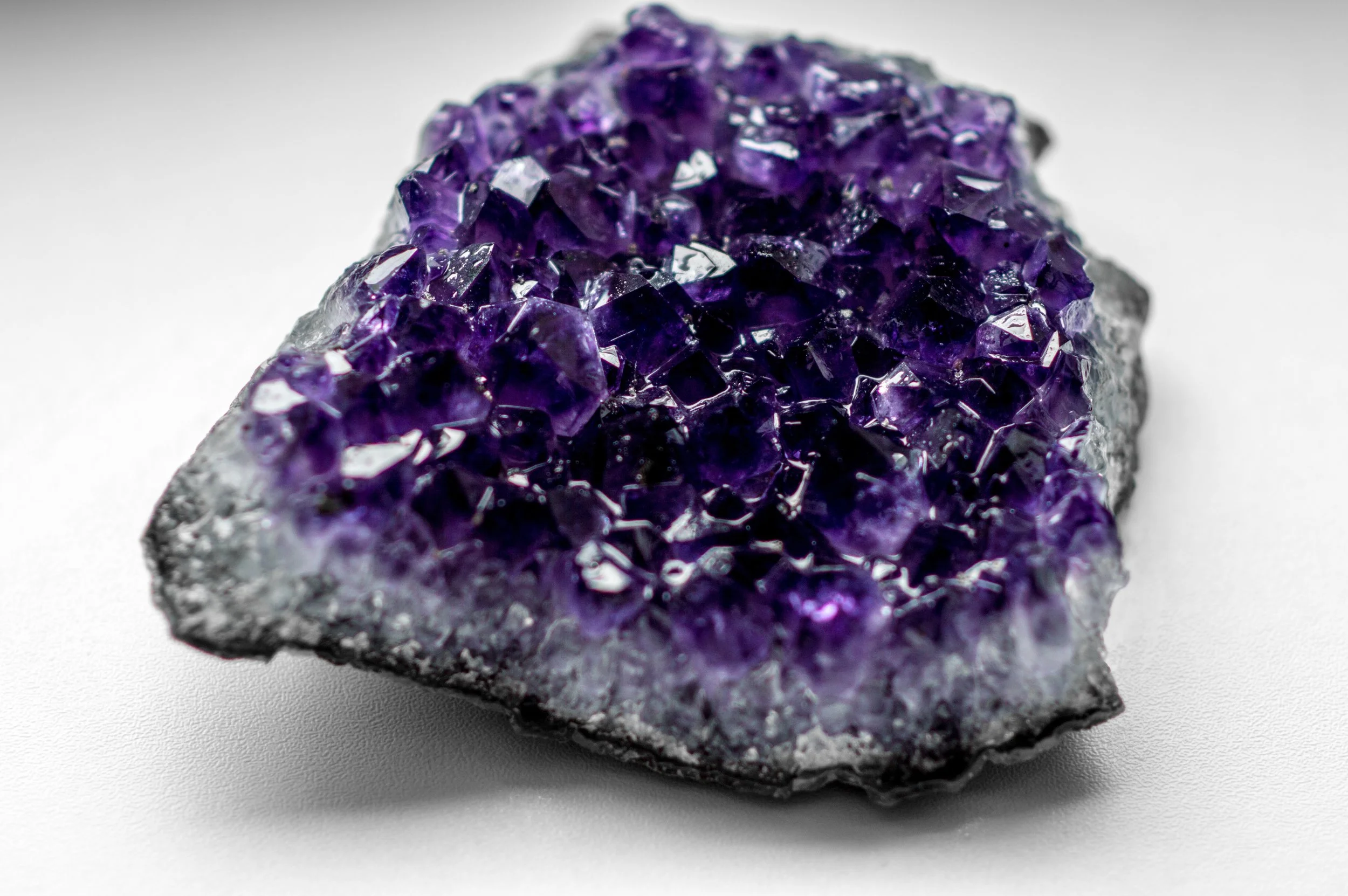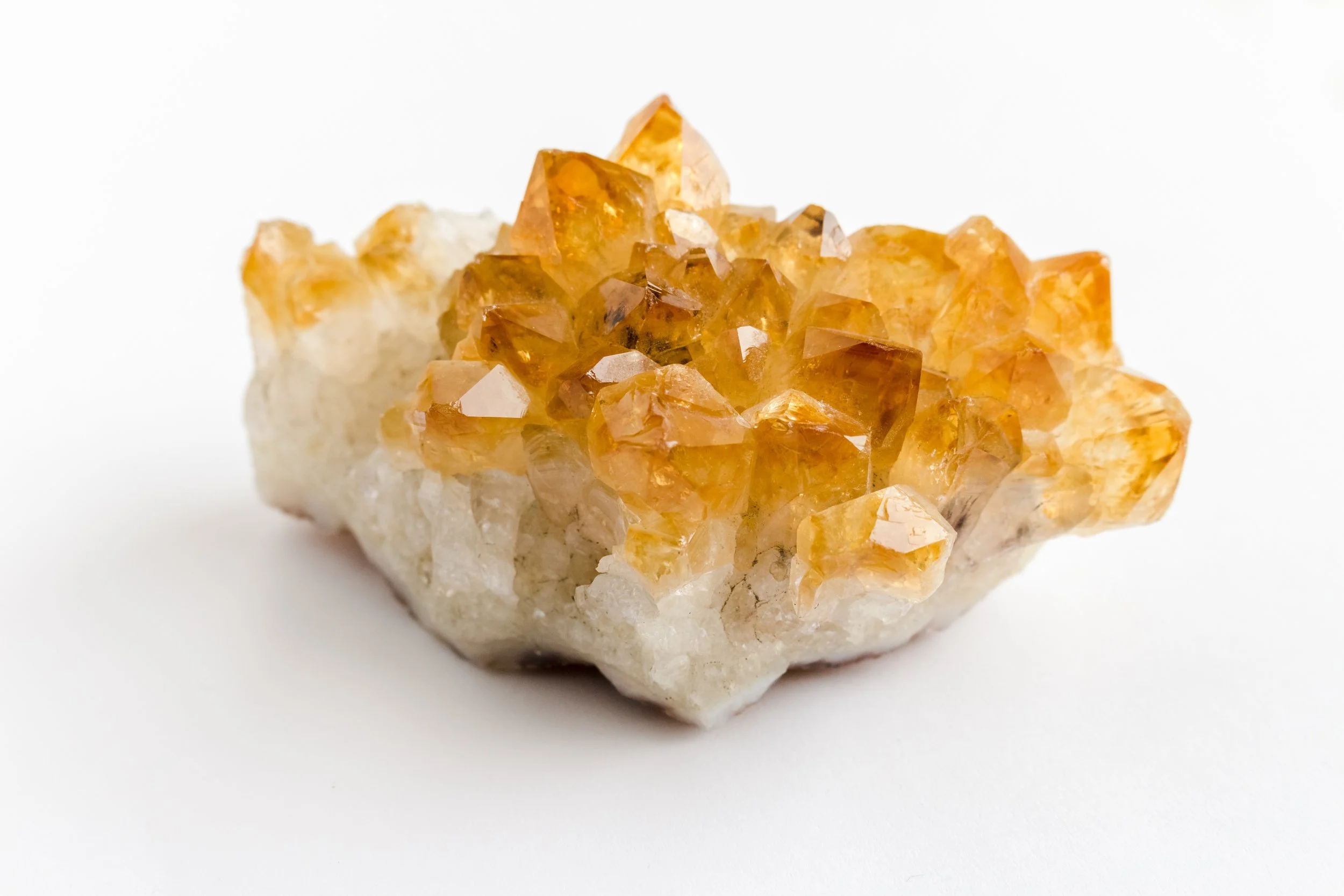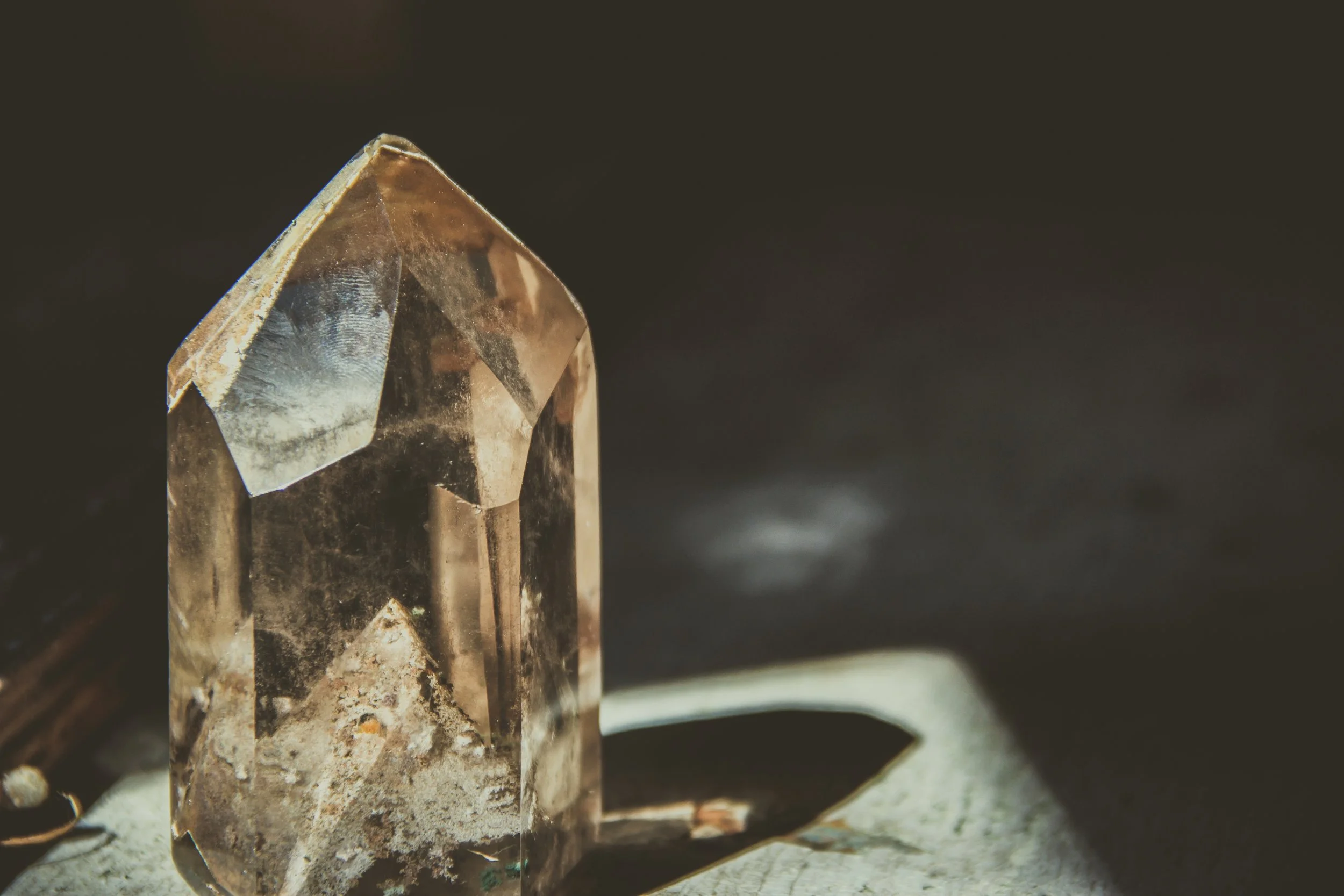Quartz
Quartz is the biggest gemstone species of all, and one of the most widely used stones in modern jewellery making. It’s an extremely versatile family that includes a wide range of affordable coloured gems.
The abundance and beauty of quartz has meant that it has been used since the dawn of history, with beads of quarts having been found in caves in Israel dating back as far as 5,000 and 6,000 years ago.
Amethyst
Amethyst has been and still is one of the most popular quartzes. It can be found in all shades of purple, from lilac to mauve, and historically it was believed to guard the wearer against drunkenness as well as to instil a serious mindset. Amethyst is dichroic, showing a blushing tinge when viewed from different angles. The best material is still considered to emerge from Russia, with the deeper more uniform purple coloured material fetching higher prices than the pale lavenders.
Aventurine
Aventurine quartz is a semi-translucent green stone freckled with tiny sparkling flecks of green fuchsite mica. It may also occur with more metallic or brassy shine due to inclusions of pyrite and goethite. Aventurine is an affordable stone and makes attractive cabochons and beads.
chatoyant quartz
Chatoyancy is an effect more commonly known as cat’s-eye, but also referred to as tiger’s-eye or hawk’s-eye depending on the colour combination present in the effect. All three varieties have a fibrous structure with inclusions of crocidolite which is the cause of the chatoyancy. This effect is best seen in cabochon cuts. Cat’s-eye is often found with a more green-brownish lustre with streaks of yellow, tiger’s-eye a darker brown to black with golden streaks, and finally hawk’s-eye with bluer hues with streaks of yellow.
Citrine
Deriving its name from the citrus fruit, the citrine is the yellow or golden variety of quartz coloured by the presence of iron. It ranges in hue from a pastel lemon yellow to deep reddish brown and amber. The darker the colour, the more expensive the material becomes. Natural citrine is usually a pale yellow and is rare, as the majority of the citrine on the market is heat-treated amethyst.
Colourless Quartz
An abundant gemstone appearing at first sight like a transparent mass of ice, colourless quartz was frequently faceted as beads and stones in antique jewellery, lamps and lenses. Although one would usually want gemstones free from inclusions, clear quartz often possess inclusions that are decorative and could be used in the cutting process to create a unique design.
Rose Quarts
Rose quartz is a beautiful gemstone with colours ranging from pale pink to a deep peachy pink, most of which have a rather cloudy or translucent appearance. Clear gem-like crystals is limited and can be expensive, especially the deeper colours. The lower-grade material may be brittle, but despite this is used frequently in carving and as beads.
Smokey Quartz
The smokey quartz, named after the Cairngorm and Morion mining areas in Scotland, appears in a range of soft, subtle colours including gentle yellowish brown, rich chocolate, dark charcoal-brown and nearly black. Natural smoky quartz is plentiful in supply and available in larger sizes, making it an extremely economical stone to use with endless possibilities available.
Sources:
Judith Crowe, The Jeweller's Directory of Gemstones (London: A&C Black, 2006)
Cally Hall, Gemstones (London: Dorling Kindersley, 1994)
Jaroslaw Bauer and Vladimir Bouska, A Guide in Colour to Precious & Semiprecious Stones (London: Octopus Books, 1983)


